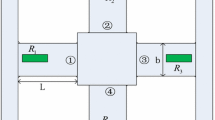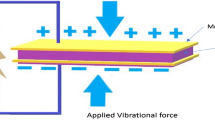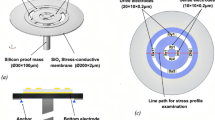Abstract
There exist several difficulties in the design of monolithic high-shock three-axis accelerometer, such as high g overload, transverse overload and the cross coupling in three dimensions, etc. It is necessary to optimize the sensitivity to improve the performance of the accelerometer. For the monolithic high-shock three-axis accelerometer, the complexity of the sensitivity optimization is that it should consider not only the sensitivity difference between different axes but also the elimination of cross-coupling outputs, together with the natural frequency, structural integrity and high g overload. In this paper, the optimization process for decreasing the difference of the sensitivities between different axes of a monolithic high-shock three-axis piezoresistive accelerometer with single sensing element is established. The optimization is conducted in the condition of 100000 g acceleration by two methods-the method based on the optimization module of ANSYS and the ACO (ant colony optimization) method. The comparison between un-optimized and optimized models proves the efficiency of the optimization methods. In addition, the optimization results show that the ACO method combined with the FEA (finite element analysis) is much more efficient than the method based on the optimization module of ANSYS for the structural optimization problem. And the ACO method can be widely used in the optimization problem of the sensing elements with complicated structure.
Similar content being viewed by others
References
Ning Y, Loke Y, Mckinnon G. Fabrication and characterization of high g-force, silicon piezoresistive accelerometers. Sens Act A, 1995, 48: 55–61
Atwell A R, Okojie R S, Kornegay K T, et al. Simulation, fabrication and testing of bulk micromachined 6H-SiC high-g piezoresistive accelerometers. Sens Act A, 2003, 104: 11–18
Jiang Y Q, Du M H, Luo L, et al. Simulation of the potting effect on the high-g MEMS accelerometer. J Electro Mater, 2004, 33: 893–899
Chae J, Kulah H, Najafi K. A monolithic three-axis micro-g micromachined silicon capacitive accelerometer. IEEE J MEMS, 2005, 14: 235–242
Rödjegård H, Johansson C, Enoksson P, et al. A monolithic three-axis SOI-accelerometer with uniform sensitivity. Sens Act A, 2005, 123-124: 50–53
Amarasinghe R, Dao D V, Toriyama T, et al. Simulation, fabrication and characterization of a three-axis piezoresistive accelerometer. Smart Mater Struct, 2006, 15: 1691–1699
Xu J B, Zhao Y L, Jiang Z D, et al. A monolithic multi-sensor for three-axis accelerometer, absolute pressure and temperature. IEEE Sens, 2006, 2006. 1049–1052
Hamaguchi H, Sugano K, Tsuchiya T, et al. A differential capacitive three-axis SOI accelerometer using vertical comb electrodes. In: The 14th Internationd Conferences on Solid-State Sensors, Actuators and Microsystems, Lyon, 2007. 1483–1486
Perez M A, Shkel A M. Design and demonstration of a bulk micromachined Fabry-Perot μg-resolution accelerometer. IEEE Sens J, 2007, 7: 1653–1662
Tran T D, Dao D V, Bui T T, et al. Optimum design considerations for a 3-DOF micro accelerometer using nanoscale piezoresistors. In: Proceedings of the 3rd IEEE International Conference on NEMS, 2008, Jan 6–9, Sanya. 770–773
Ma A H, Leung A M. Three-axis thermal accelerometer based on buckled cantilever microstructure. In: IEEE SENSORS 2008 Conference, 2008, Oct 26–29, Lecce. 1492–1495
Dong P T, Li X X, Yang H, et al. High-performance monolithic triaxial piezoresistive shock accelerometers. Sens Act A, 2008, 141: 339–346
Colorni A, Dorigo M, Maniezzo V. Distributed optimization by ant colonies. In: Proceedings of ECAL91 1991, Paris. New York: Elsevier, 1991. 134–142
Karaboga N, Kalinli A, Karaboga D. Designing digital IIR filters using ant colony optimisation algorithm. Eng Appl Artif Intl, 2004, 17: 301–309
Song F, Wen W D, Cui H T. Structural shape optimization based on an improved ant colony algorithm (in Chinese). Acta Aeronautica Et Astronautica Sinica, 2007, 28: 1110–1115
Aghdam M H, Aghaee N G, Basiri M E. Application of ant colony optimization for feature selection in text categorization. In: 2008 IEEE Congress on Evolutionary Computation, 2008, 2867–2873
Duan H B. Ant Colony Algorithms: Theory and Applications (in Chinese). Beijing: Science Press, 2005
Stutzle T, Hoos H. The MAX-MIN ant system and local search for the traveling salesman problem. In: Proceedings of the 4th (International Conferences) on Evolutionary Computation (ICEC’97), 1997, Indianapolis. 308–313
Author information
Authors and Affiliations
Corresponding author
Additional information
Supported by the “111” Project (Grant No. B08043) and Foundation Program of National Key Lab for Electronic Measurement and Technology (Grant No. 9140C12040606060C12)
About this article
Cite this article
Song, P., Li, Q. & Li, K. Sensitivity optimization of a monolithic high-shock three-axis piezoresistive accelerometer with single sensing element. Chin. Sci. Bull. 54, 3600–3607 (2009). https://doi.org/10.1007/s11434-009-0406-x
Received:
Accepted:
Published:
Issue Date:
DOI: https://doi.org/10.1007/s11434-009-0406-x




